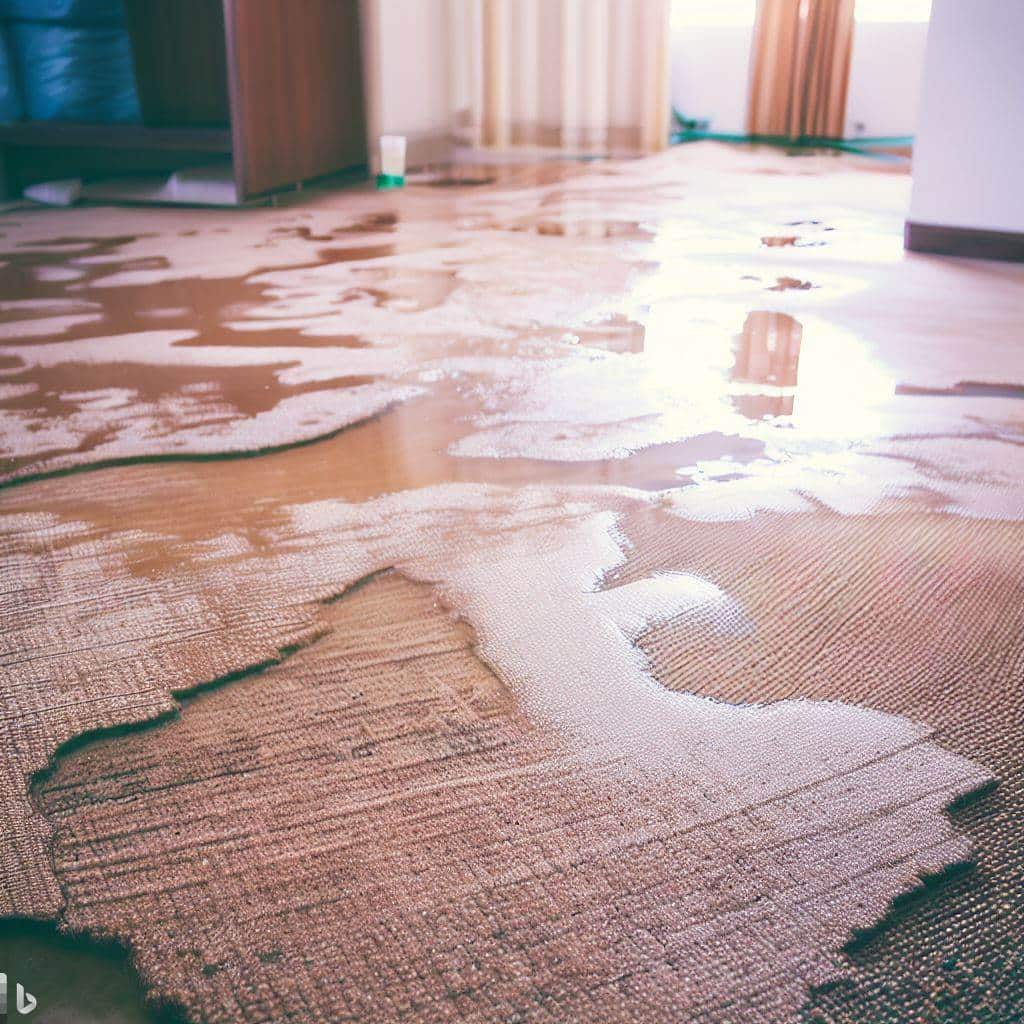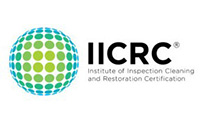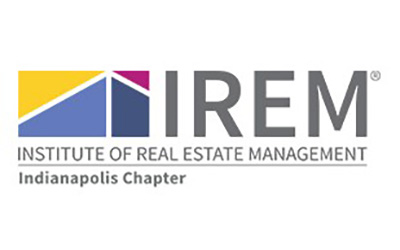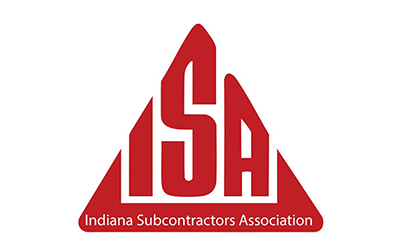Water damage to carpets is a common problem that many homeowners face. Whether it’s due to a leaky roof, a burst pipe, or a flood, water damage can cause significant damage to carpets and other flooring materials. When carpets get wet, they can quickly become a breeding ground for mold and mildew, which can cause health problems for people with allergies or respiratory issues.
The first step in dealing with water damage to carpets is to remove any standing water as quickly as possible. This can be done using a wet vacuum or a pump. Once the water has been removed, it’s important to dry the carpet thoroughly to prevent mold and mildew from growing. This can be done using fans, dehumidifiers, and heaters. In some cases, it may be necessary to remove the carpet and replace it with new material if the damage is too extensive. There are mold test kits online you can buy to test but its usually best to have our mold removal team in Indianapolis look at it for you.
Causes of Water Damage to Carpets in Indianapolis, IN
Water damage to carpets can be caused by a variety of factors. Knowing the causes can help you prevent water damage and protect your carpets from costly repairs. In this section, we will explore the most common causes of water damage to carpets.
Leaking Pipes and Appliances
Leaking pipes and appliances are one of the most common causes of water damage to carpets. When pipes or appliances such as washing machines, dishwashers, and refrigerators leak, they can cause water to seep into the carpet, causing damage. It is important to regularly check your pipes and appliances for leaks and have them repaired immediately if any leaks are detected.
Floods and Heavy Rains
Floods and heavy rains can also cause water damage to carpets. When rainwater or floodwater enters your home, it can saturate your carpets, causing them to become waterlogged. This can lead to mold growth and other problems. It is important to take steps to protect your home from floods and heavy rains, such as installing flood barriers and ensuring that your gutters are clear and functioning properly.
Sewage Overflow
Sewage overflow is another cause of water damage to carpets. When your sewer system becomes clogged or overloaded, it can cause sewage to back up into your home, including your carpets. Sewage overflow can pose serious health risks and should be dealt with immediately by a professional.
In conclusion, water damage to carpets can be caused by a variety of factors, including leaking pipes and appliances, floods and heavy rains, and sewage overflow. It is important to take steps to prevent water damage to your carpets, such as regularly checking your pipes and appliances, protecting your home from floods and heavy rains, and addressing sewage overflow immediately.
Health Risks Associated with Water Damage Carpets
Water damage carpets can pose significant health risks to individuals living or working in the affected area. The presence of moisture in carpets can create an ideal environment for mold, mildew, bacteria, and fungi to grow. Exposure to these microorganisms can lead to various health problems, particularly respiratory issues.
Mold and Mildew
Mold and mildew are types of fungi that can grow on damp carpets. They release spores that can cause respiratory problems, such as wheezing, coughing, and shortness of breath. Prolonged exposure to mold spores can also lead to the development of chronic obstructive pulmonary disease (COPD) in some individuals.
Bacteria and Fungi
Water damage carpets can also harbor various types of bacteria and fungi. These microorganisms can cause infections and other health problems, particularly in individuals with weakened immune systems. Some types of bacteria found in water-damaged carpets, such as E. coli and Salmonella, can cause gastrointestinal problems, including diarrhea and vomiting.
To prevent the growth of mold, mildew, bacteria, and fungi, it is essential to address water damage in carpets promptly. The affected area should be thoroughly cleaned and dried to prevent the growth of these microorganisms. If the damage is severe, it may be necessary to replace the carpet entirely.
In conclusion, water damage carpets can pose significant health risks to individuals living or working in the affected area. Mold, mildew, bacteria, and fungi can grow on damp carpets and release spores that can cause respiratory issues and other health problems. It is essential to address water damage in carpets promptly to prevent the growth of these microorganisms and minimize the risk of health problems.
Steps to Take When You Have Water Damaged Carpet in Indiana
If you have water damaged carpet, it is important to take immediate action to prevent further damage and potential health hazards. Here are some steps to take when dealing with water damaged carpet:
Safety First
Before starting any cleanup process, it is important to prioritize safety. Turn off any electrical appliances in the affected area and wear protective gear such as gloves and boots to avoid direct contact with the water. If the water is contaminated, it is important to wear a facemask and protective eyewear.
Assess the Damage
Assess the extent of the damage to determine if you can handle the cleanup process on your own or if you need to call in a professional. If the water is clean and the damage is minimal, you may be able to handle the cleanup yourself. However, if the water is contaminated or the damage is significant, it is best to call in a professional.
Extract Water and Dry the Carpet
The first step in the cleanup process is to extract as much water as possible from the carpet and padding using a wet-dry vacuum or bucket. If you have standing water, consider using a pump to remove it. Once the excess water has been removed, use fans and dehumidifiers to dry the carpet and prevent mold growth. It is important to dry the carpet completely, including the carpet pad, to prevent further damage.
Disinfect and Deodorize
After the carpet is dry, it is important to disinfect and deodorize the affected area to prevent bacteria and odor buildup. Use a solution of water and bleach to disinfect the area, making sure to test the solution on a small area first to ensure it does not damage the carpet. Once the area is disinfected, use a deodorizer to eliminate any lingering odors.
In conclusion, water damage to carpets can be a stressful and potentially hazardous situation. By taking immediate action and following these steps, you can minimize the damage and prevent potential health hazards. If you are unsure about the extent of the damage or are uncomfortable handling the cleanup process on your own, it is best to call in a professional.
Replacing Water Damaged Carpet in Indianapolis
When water damage affects a carpet, sometimes it is necessary to replace it. This section will cover the steps involved in replacing water damaged carpet, including removing the old carpet, replacing the carpet pad, and installing new carpet.
Removing the Old Carpet
Before installing new carpet, it is important to remove the old carpet and carpet pad. The first step is to cut the carpet into manageable sections with a utility knife. Once the carpet is cut, it can be rolled up and removed from the room.
Next, the carpet pad should be removed. The carpet pad is usually held in place with staples or adhesive. Use pliers to remove any staples and a scraper to remove any adhesive. Once the carpet pad is removed, it is important to inspect the subfloor for any damage. If the subfloor is damaged, it will need to be repaired or replaced before installing new carpet.
Replacing the Carpet Pad
Once the old carpet and carpet pad are removed, it is time to install a new carpet pad. The carpet pad is important because it provides cushioning and support for the carpet.
Measure the room to determine the amount of carpet pad needed. The carpet pad should be cut slightly smaller than the room to allow for expansion and contraction. Use a staple gun to attach the carpet pad to the subfloor.
Installing New Carpet
After the carpet pad is installed, it is time to install the new carpet. Measure the room to determine the amount of carpet needed. When purchasing new carpet, be sure to choose a carpet that is appropriate for the room’s use and traffic.
Lay the carpet out in the room and trim it to fit. Use a knee kicker to stretch the carpet into place and a carpet trimmer to trim the excess. Finally, reinstall the baseboards to complete the job.
In conclusion, replacing water damaged carpet involves removing the old carpet, replacing the carpet pad, and installing new carpet. It is important to inspect the subfloor for any damage and choose a carpet that is appropriate for the room’s use and traffic. With the right tools and materials, replacing water damaged carpet can be done quickly and efficiently.

Preventing Water Damage to Carpets
Water damage to carpets is a common problem that can lead to costly repairs and replacements. However, homeowners can take steps to prevent water damage to their carpets by following some simple guidelines.
Regular Inspection and Maintenance
Regular inspection and maintenance can help prevent water damage to carpets. Homeowners should inspect their carpets regularly for signs of wear and tear, such as frayed edges, loose threads, or worn spots. They should also check for signs of water damage, such as discoloration, musty odors, or mold growth.
Regular vacuuming can help prevent dirt and debris from accumulating on carpets, which can lead to water damage. Homeowners should also consider having their carpets professionally cleaned on a regular basis to remove dirt, dust, and other contaminants that can damage the fibers of the carpet.
Quick Response to Leaks and Spills
Quick response to leaks and spills can help prevent water damage to carpets. Homeowners should immediately clean up any spills or leaks on their carpets to prevent water from seeping into the fibers of the carpet. They should use a clean, absorbent towel to blot up the spill, and then use a wet/dry vacuum or fan to dry the area thoroughly.
Protecting Carpets During Flooding
During flooding, homeowners should take steps to protect their carpets from water damage in Indianapolis. They should move furniture and area rugs away from the affected area to prevent water from seeping into the fibers of the carpet. They should also use sandbags or other barriers to prevent rainwater from entering their home.
If water damage does occur, homeowners should contact a water damage restoration company as soon as possible. They should also contact their insurance company to file a claim for the damage.
Regular inspection, maintenance, quick response to leaks and spills, and protecting carpets during flooding are all important steps that homeowners can take to prevent water damage to their carpets. By following these guidelines, homeowners can help ensure the safety of their homes and prevent costly repairs and replacements.



























